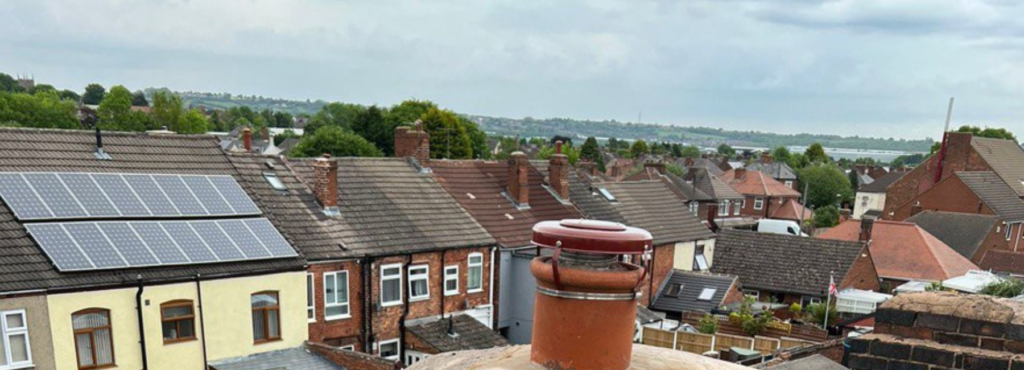When it comes to upgrading or repairing your roof, liquid roof covering is becoming an increasingly popular choice. Known for its flexibility, seamless installation, and long-lasting protection, liquid roofing offers many benefits for both flat and pitched roofs. However, one question that homeowners in Gosport, Hampshire often ask is whether it’s a good idea to tackle liquid roof covering installation as a DIY project, or if it’s best left to the professionals.
In this blog post, we’ll weigh the pros and cons of DIY liquid roof installation versus hiring a professional roofing contractor, helping you make the best decision for your home.
What is Liquid Roof Covering?
Liquid roof covering is a modern solution made from liquid-based materials, such as acrylic, polyurethane, or silicone. It is applied directly to the roof surface, forming a continuous and seamless waterproof membrane once it dries. This makes it ideal for protecting against leaks, UV damage, and other weather-related issues. Liquid roofing is especially beneficial for flat roofs, where traditional roofing materials might struggle to provide adequate protection.
The Appeal of DIY Liquid Roof Covering
DIY liquid roof covering can be an attractive option for those who want to save money on installation. With the right tools and knowledge, installing liquid roofing yourself can be a manageable task. Let’s explore some of the benefits and challenges associated with DIY installation.
Benefits of DIY Installation
- Cost Savings: The most obvious advantage of installing liquid roof covering yourself is the cost savings. By avoiding professional labour costs, you can reduce the overall expense of the project.
- Control Over Timing: DIY projects give you complete control over the schedule. You can work on the roof at your own pace, making it easier to fit the installation into your routine.
- Satisfaction of Completing the Project: For homeowners who enjoy DIY work, installing a liquid roof covering can be a fulfilling project, especially when you see the results of your hard work.
Challenges of DIY Installation
- Complexity of Preparation: Proper surface preparation is crucial for a successful liquid roof installation. The roof must be clean, dry, and free of debris, which can be difficult to achieve without the right tools and experience.
- Weather Dependency: Liquid roofing materials require specific weather conditions to cure properly, typically dry and mild temperatures. If the weather doesn’t cooperate, you could face delays or an imperfect finish.
- Lack of Expertise: If you lack experience in roofing or handling liquid materials, there’s a risk that you may apply the coating unevenly, leading to future issues such as cracking, peeling, or leaks. Inadequate application can shorten the lifespan of your roof and result in additional costs later on.
- Safety Concerns: Roofing is inherently dangerous, and without the right safety equipment or experience, you could put yourself at risk when working at heights.
Why Hire a Professional for Liquid Roof Covering Installation?
While DIY might seem appealing, there are several reasons why hiring a professional roofing contractor is often the smarter choice, particularly for homeowners in Gosport, Hampshire.
Benefits of Hiring a Professional
- Expert Installation: A professional roofing contractor has the skills and knowledge to prepare your roof correctly and apply the liquid roofing system effectively. They know how to ensure even coverage, making sure the coating bonds properly to prevent leaks and other issues.
- Quality Materials: Professionals have access to high-quality materials that may not be available to DIYers. They are also familiar with the latest advancements in liquid roofing products, ensuring your roof receives the best possible protection.
- Time-Saving: A professional roofing contractor can complete the job much faster than a DIYer, as they have the proper tools, experience, and team to get the job done efficiently.
- Long-Term Warranty: Many roofing companies offer warranties on their workmanship, giving you peace of mind. If something goes wrong after installation, you can rely on the contractor to address the issue without additional cost.
- Safety: Roofing professionals are equipped with the necessary safety gear and experience to handle the job safely. This reduces the risk of accidents and injuries, which are more common when working on a roof without the right precautions.
- Peace of Mind: When you hire a professional, you don’t have to worry about making mistakes, missing steps, or dealing with unexpected issues. A reputable contractor will manage everything from preparation to clean-up, allowing you to focus on other priorities.
Potential Drawbacks of Hiring a Professional
- Higher Initial Cost: While hiring a professional will increase the upfront cost, the benefits of proper installation, materials, and warranty typically outweigh this investment in the long run.
- Scheduling and Availability: Depending on the contractor’s schedule, you might have to wait for the right time slot to get your roof covered.
Conclusion: DIY or Hire a Pro?
When it comes to liquid roof covering installation, the choice between DIY and hiring a professional largely depends on your experience, budget, and the complexity of the job. While DIY installation can save money upfront, it comes with risks, including improper application, safety concerns, and the potential for costly repairs down the line.
For most homeowners in Gosport, Hampshire, hiring a professional roofing contractor is the best option. A professional ensures proper application, uses high-quality materials, and provides peace of mind with warranties and long-lasting results.
If you’re considering a liquid roof covering for your home, contact Gosport Roofing Repairs today. Our team of experienced professionals is here to guide you through the process, offering expert advice and seamless installation to protect your home for years to come.
Call us on: 023 8235 7296
Click here to find out more about Gosport Roofing Repairs
Click here to complete our contact form and see how we can help with your Roofing needs.

